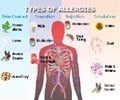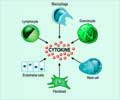A less-is-more approach to designing effective drug treatments that are precisely tailored to disease-causing pathogens has been taken by scientists at Johns Hopkins.

Knowing exactly where the best antigen-T-cell fit occurs – at sites where short stretches of proteins, called peptides, bind and are displayed on the surface of antigen-processing immune system cells – is a prerequisite for designing effective and targeted drug therapies, researchers say.
Identifying the best binding site, they say, should speed up cancer vaccine development, lead to new diagnostic tests that detect the first appearance of cancer cells, well before tumors develop, and sort out disorders that are difficult to diagnose, such as Lyme disease.
"Our new, simplified system reproduces what happens in the cells of the immune system when antigens from a pathogen first enter the body and need to be broken down into peptides to become visible to T cells, one of the two immune defender cell types," says immunologist Scheherazade Sadegh-Nasseri, Ph.D., an associate professor of pathology, biophysics and biophysical chemistry at the Johns Hopkins University School of Medicine. "Once T cells recognize an antigen, they latch on, become activated, and call for other immune system cells to enter the fight," adds Sadegh-Nasseri, the senior study investigator for the team of scientists who developed the new epitope-mapping process.
Sadegh-Nasseri says the team's new lab test takes a fraction of the time involved in current methods, which rely on sequencing, or identifying every single peptide in the antigen's make-up, one after another. Such sequencing can take months, or even years, to identify possible T cell binding sites.
"The added beauty of our system is that the entire process can be done in the lab, so we do not have to perform tests in people," says Sadegh-Nasseri, who has a patent pending for the new test.
Advertisement
In their latest series of experiments, the team tested a mix of the selected immune system proteins to see if it could accurately detect two already known epitopes, those of the Texas strain of the influenza virus and type II collagen, both widely used experimental antigens. Then, they used the mix to find unknown epitopes for portions of the influenza virus that causes avian flu and for the parasite involved in malaria.
Advertisement
Other key chemicals in the make-up were HLA-DM, another protein compound that disrupts the binding of HLA-DR molecules to an antigen if the fit is not perfect, and three of the most common enzymes, so-called cathepsins, involved in breaking up the antigen into its visible, identifiable protein parts.
In the first set of experiments, the team mixed chemical solutions of each antigen with the five key proteins and used mass spectrometry – an electron-beaming device that can measure the exact make-up of molecules – to determine the best-fitting peptide based on precisely which segment of the antigen appeared as mass peaks. Peaks would indicate that HLA-DR had successfully bound to the antigen at a likely epitope.
Next, researchers confirmed their mass spectrometry findings by injecting mice bred to produce human HLA-DR with each antigen to trigger a standard immune response and collecting samples of the resulting T cells. The T cells were then grown in the lab and exposed to various peptides, including the suspect epitopes, to identify and confirm that only one triggered the greatest chemical response from the cultured T cells. The scientists knew that if they could match a peak highlighted by mass spectrometry to the peptide that produced the greatest T cell reaction, they had found the most heavily favored epitope.
When both tests were performed on any of the four disease antigens, researchers were able to narrow the suspect binding sites to one "immunodominant" epitope each for Texas strain of the flu, type II collagen, avian flu and malaria.
Kim, a postdoctoral research fellow at Johns Hopkins, says designing both experiments and completing the verification study took some seven years, noting that adding HLA-DM, which she calls a protein editor, was the pivotal factor in making the initial epitope-selection process work.
Researchers say their next steps are to broaden and refine their chemical mixture for selecting and identifying possible epitopes for other kinds of HLA because the current set of experiments analyzes only one of the most common HLA-type molecules in whites.
Source-Eurekalert












